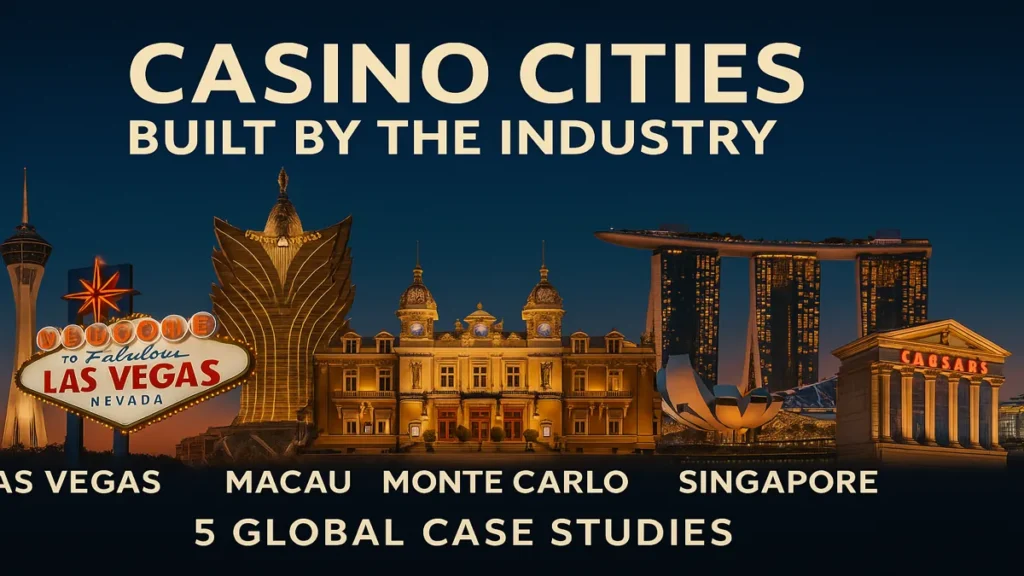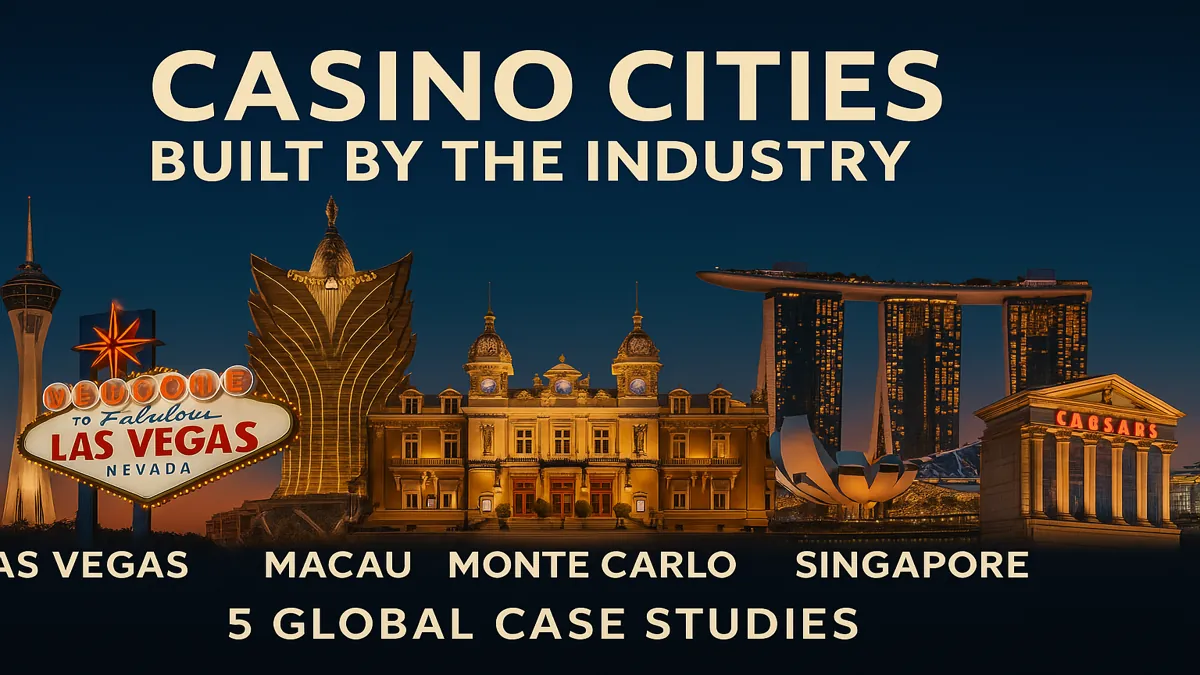The casino industry has done more than entertain gamblers; it has shaped entire cities. Some urban centers have risen to global fame by embracing gambling as a core economic strategy. This article analyzes five cities around the world that were transformed by the casino industry, examining how gambling helped define their identities, economies, and global appeal.

1. Las Vegas, USA – The Pioneer of Casino-Driven Urbanism
From desert outpost to entertainment capital
Las Vegas is the most iconic example of a city shaped by casinos. Originally a small railway town, its transformation began in the 1930s with the legalization of gambling in Nevada. Mob-funded casinos like the Flamingo laid the foundation for the Strip. Over time, corporate takeovers replaced organized crime, and mega-resorts redefined the city. Today, Las Vegas is a multi-billion-dollar entertainment hub attracting over 40 million visitors annually.
2. Macau, China – The Asian Gambling Giant
Blending heritage with high-stakes gaming
Macau, a former Portuguese colony, is now the world’s largest gambling center, surpassing even Las Vegas in revenue. Its success started in the early 2000s after China liberalized the gambling market. Global casino operators rushed in, building extravagant resorts like The Venetian Macau. The industry has fueled the city’s GDP, tourism, and employment, making Macau a unique fusion of East Asian tradition and global gaming culture.
3. Monte Carlo, Monaco – Royalty, Luxury, and Roulette
Glamour and gambling since the 19th century
Monte Carlo is synonymous with elegance and high-stakes play. The city-state of Monaco legalized gambling in the mid-1800s to solve economic struggles. The Casino de Monte-Carlo, opened in 1863, became a playground for European elites. Casino revenue still supports Monaco’s welfare system, and the city remains a luxury destination with a distinct identity tied to casino culture.
4. Atlantic City, USA – Boom, Bust, and Revival
A cautionary tale of over-reliance
Atlantic City legalized casinos in 1976 to compete with Las Vegas and revitalize its economy. While initially successful, the city faced challenges due to competition from other states and poor infrastructure investment. Several casinos have closed, but efforts are ongoing to diversify tourism and redevelop the waterfront. It remains an important lesson in balancing gambling with broader urban planning.
5. Singapore – Regulation Meets Global Appeal
Government-led precision in casino development
Singapore entered the casino market late but strategically. In 2005, the government legalized integrated resorts with strict regulations. Marina Bay Sands and Resorts World Sentosa became iconic landmarks. The industry boosted tourism and jobs, but strict policies—like entrance fees for citizens—help mitigate social harm. Singapore’s model is often praised for balancing economic gain with societal responsibility.
The Casino Industry as a City Maker
These five cities illustrate the power of the casino industry to transform urban landscapes. Whether through rapid economic development, cultural branding, or global tourism, casinos have shaped destinies. But as shown in Atlantic City’s story, success depends on sustainable planning, regulation, and adaptability.
